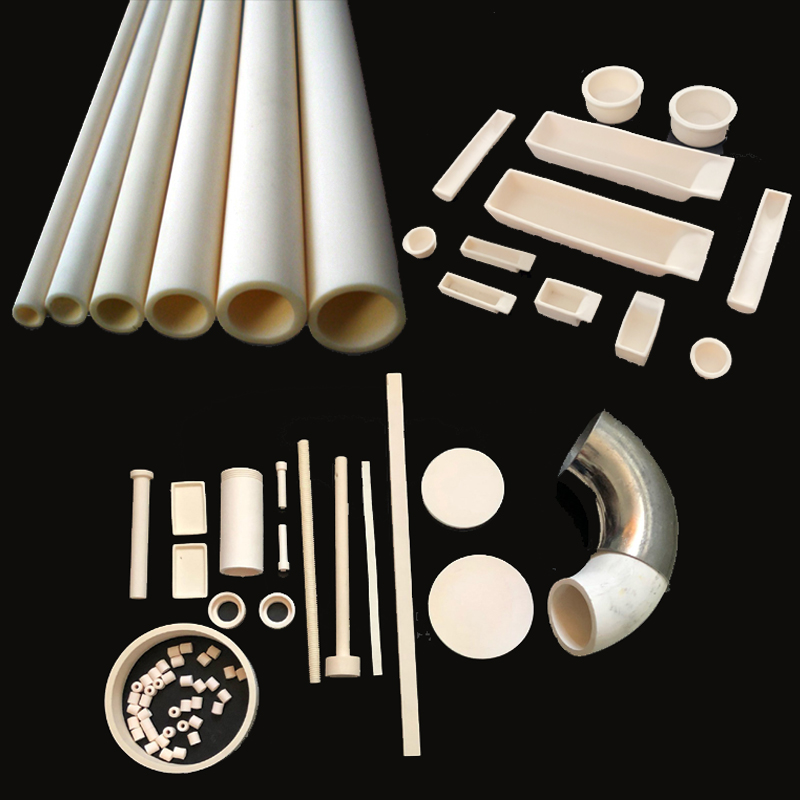High-purity Alumina: Exquisite Demonstration of Sintering Activity and Application Characteristics

Recently, a series of remarkable progress has been made in the research of high-purity alumina in the field of materials science. Its unique sintering activity and extensive application characteristics are bringing new development opportunities to numerous industries.
High-purity alumina generally refers to aluminum oxide materials with a purity of 99% or higher. With its many excellent properties such as high wear resistance, high resistance to high-temperature corrosion, high resistivity, and high thermal conductivity, it occupies a pivotal position in modern industry. From the mechanical industry to refractory materials, and from the electronics industry to the aerospace field, high-purity alumina has demonstrated irreplaceable value.
In terms of sintering activity, researchers have conducted in-depth explorations through a variety of innovative methods. Taking the chemical coprecipitation method as an example, this method has the advantages of simple equipment, low raw material cost, high yield, and high powder purity, making it an effective way for large-scale production of high-purity alumina powder. However, the complexity of the process conditions significantly affects the quality of the powder. Through the design of orthogonal experiments, it was found that the pH value is a key factor affecting the phase of the precursor and the grain size of the crystalline phase; the dropping rate of the ammonium aluminum sulfate solution dominates the particle size of the alumina powder and the content of the α-Al₂O₃ phase; while the temperature also has an important influence on the grain size of the precursor ammonium aluminum carbonate phase and the particle size of the alumina powder. After optimizing the process, by adding an appropriate amount of seed crystals, controlling the specific temperature, dropping rate, and pH value, and through calcination treatment, alumina powder with good dispersibility can be obtained. After molding, when fired into ceramics at different temperatures, it exhibits a relatively high relative density.
In terms of application characteristics, high-purity alumina shines even more brightly. In the field of the electronics industry, due to its high resistivity and excellent insulating properties, it has become an indispensable material for manufacturing electronic components. In semiconductor manufacturing equipment, the requirements for the mechanical strength and corrosion resistance of ceramic components are extremely high. By developing nanoscale α-aluminum oxide, which has a round and uniform particle shape and a sharp particle size distribution, and can be sintered at a low temperature, this demand is met, providing strong support for the development of the semiconductor industry.
In the application of thermal interface materials, with the continuous increase in the requirements for heat dissipation of electronic devices, the demand for electrically insulating and thermally conductive fillers is growing day by day. Researchers have developed large-sized aluminum oxide (260μm), which can effectively reduce the filler/resin interface and improve the thermal conductivity of the filler/resin composite material, providing a new solution to the heat dissipation problem of electronic devices.
In the field of refractory materials, high-purity alumina, by virtue of its high-temperature and corrosion resistance, can be used to manufacture high-temperature furnace linings, kiln furniture, etc., which greatly improves the service life and performance of refractory materials. In the aerospace field, its high specific strength and high-temperature resistance make it an ideal material for manufacturing aircraft engine components, thermal protection systems, etc., providing key material support for the development of the aerospace industry.
It is worth mentioning that in recent years, scientists have been continuously exploring new application fields of high-purity aluminua. For example, in the field of new energy batteries, high-purity alumina, as a coating material for battery separators, can effectively improve the safety and stability of batteries, injecting new impetus into the development of industries such as new energy vehicles.
With the continuous progress of materials science, the sintering activity and application characteristics of high-purity alumina will continue to be explored and optimized. In the future, high-purity alumina is expected to play an important role in more emerging fields and contribute to the technological upgrading and innovative development of various industries. It is believed that with the unremitting efforts of scientific researchers, high-purity alumina will shine even more brightly on the stage of materials science.

